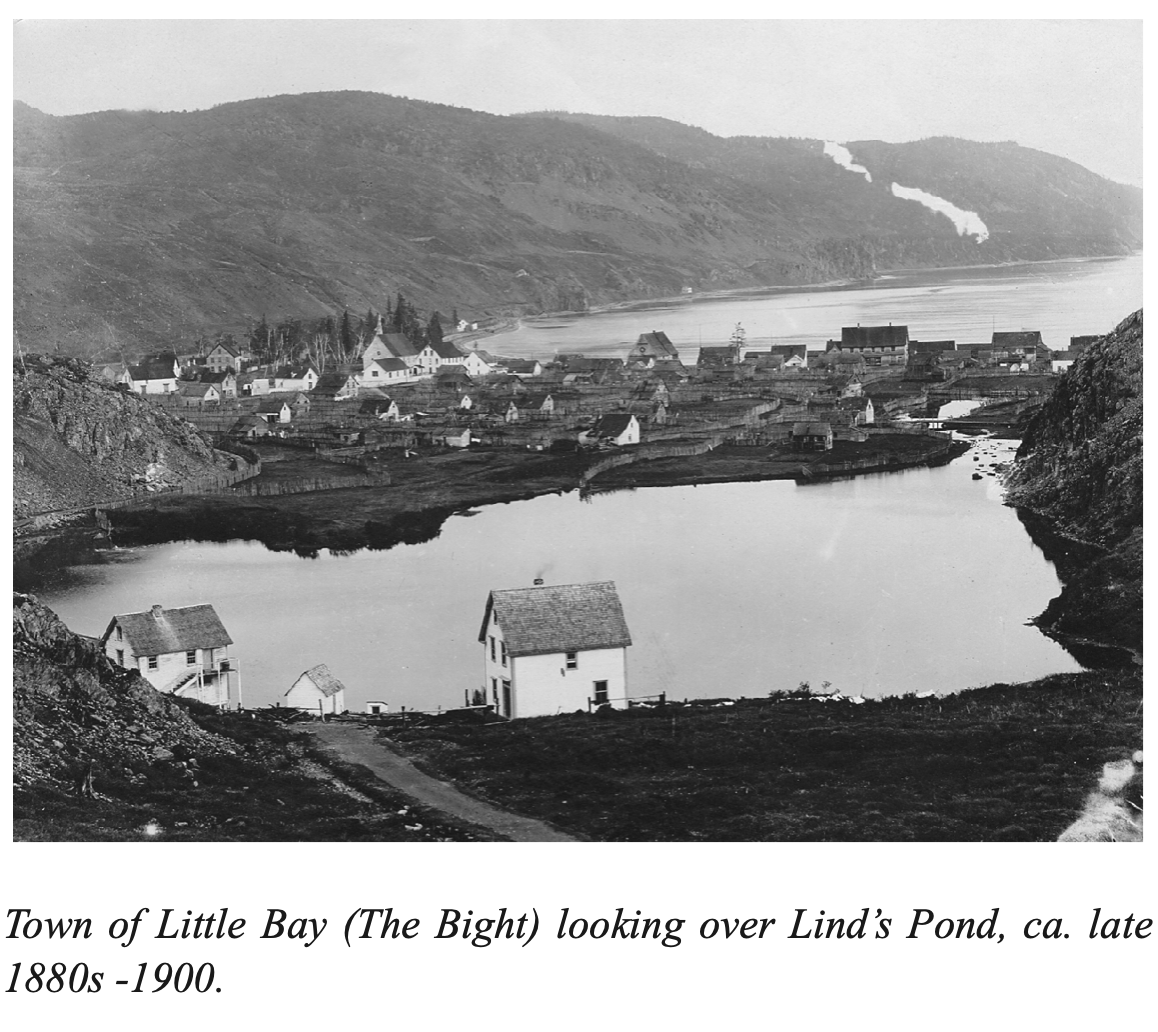
The summers of my childhood were spent in Little Bay. I fished for trout out of a small pond off the main road. It’s called Lind’s Pond. I didn’t understand the name’s significance to Newfoundland’s military history when I played by that pond as a child. It was named after the Lind family. They resided in Little Bay from the mid 1880s until the early 1940s.
Likely you already know the name Mayo Lind. It was a nickname given to a man who also spent his boyhood summers playing next to Lind’s Pond. He was born Francis “Frank” Thomas Lind. His family moved around a lot; living at Harbour Grace, Greenspond, and Betts Cove before settling in Little Bay in 1885. After becoming dissatisfied with his income as an educator, Frank’s father, Henry, had taken the job as Paymaster for the mines under a German Baron. The Linds lived in a house that sat just above the pond.
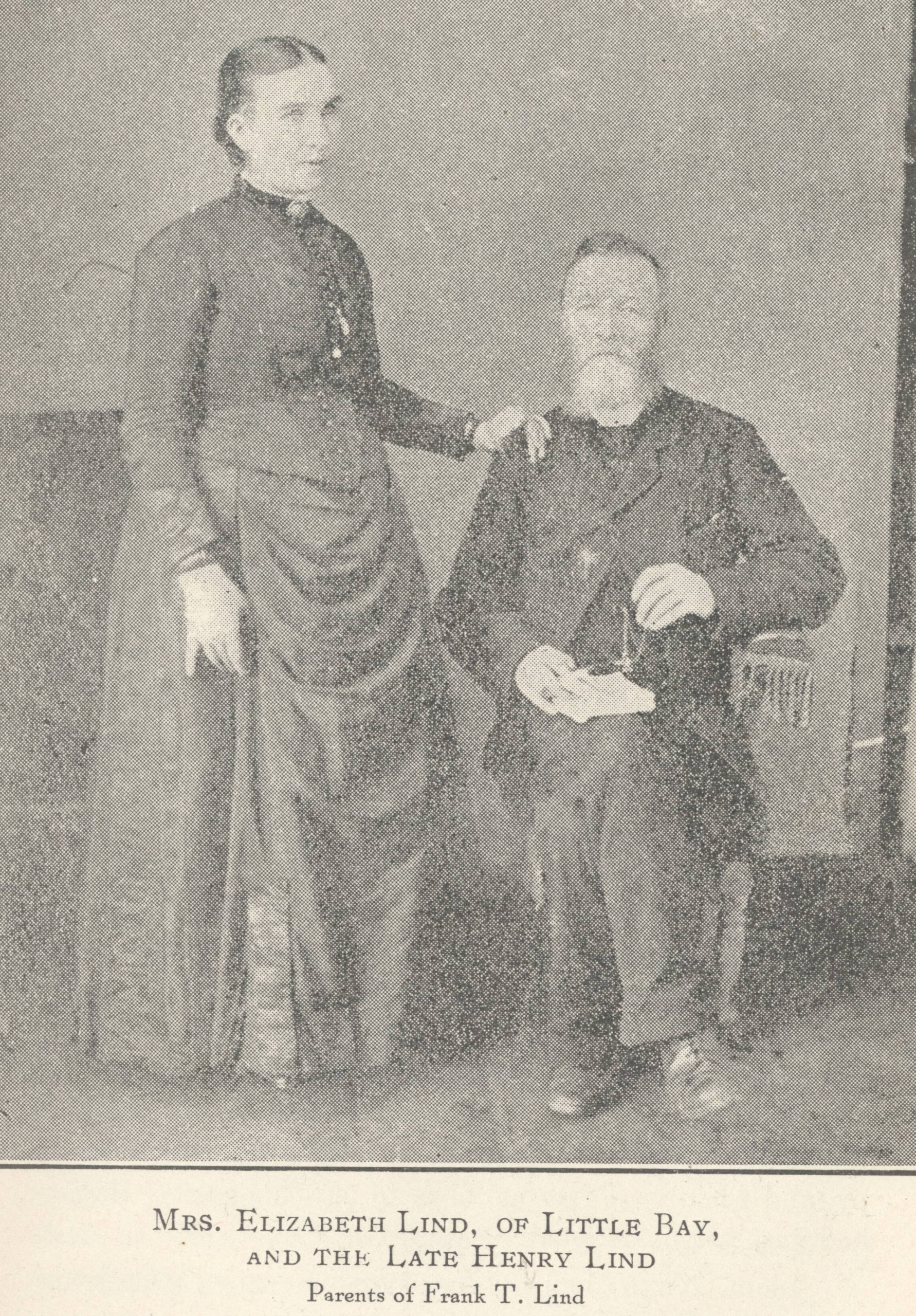
The Linds were as follows: Frank’s parents were Henry and Elizabeth (Walker) Lind. They had nine children. The oldest, Henry J., studied telegraphy before taking a job with a firm in Fogo. The second oldest William Haims, called Willy, worked in the company store in Little Bay with his father and had an interest in photography. He ended up in Nova Scotia. The next oldest, Robert George, did poorly in school and so moved to Nova Scotia to work on a farm with his grandmother and aunt. He followed them to Boston before venturing out on his own across the United States where the family seemingly lost track of him. His grandmother’s letters refer to him as “the Wanderer.” The oldest daughter was Caroline Lucretia; named for her grandmother. She died in 1907 at the age of 34. The next was James Marshall; named for his uncle in Nova Scotia. He would be the last to leave Little Bay, moving to Grand Falls. Our hero Francis Thomas Lind came next followed by Catherine Eleanor Mabel. I believe the penultimate was Ernest Alex who died in 1910 although I am missing his date of birth. Finally, the youngest daughter, Jane, the only one I know to be born in Little Bay, died there after only 13 months of life.
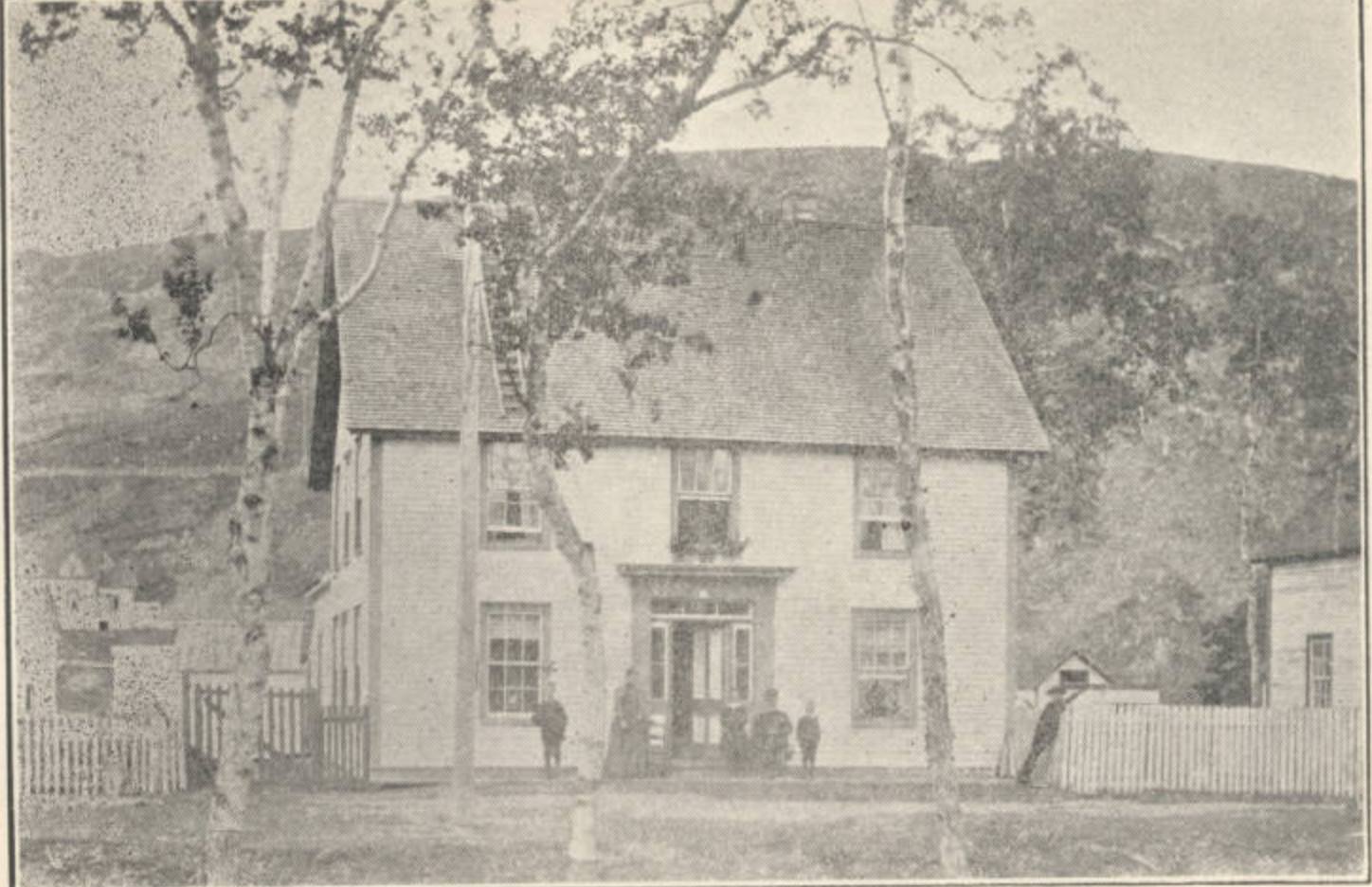
The family’s life in Little Bay was social. Paymaster Lind was involved in the Temperance meetings, did Lay readings during the absences of Rev. Clift and, participated with the visiting Bishop Llewellyn Jones in 1890 during the consecration of St. Luke’s. When the 7 year old Francis Lind arrived in Little Bay his older brother James was 11. Willy was 17 and played Cricket on the Little Bay team. It’s easy to imagine the two younger boys looking up to him while cheering from the sidelines.
The family was educated. Not only was their father a teacher but their grandfather was a minister and had passed his Latin exams. You can further tell they valued education from their letters addressing Robert the Wanderer and his difficulty with school. Education would contribute to Frank’s role in our history. He left Little Bay at the age of 14 and took a job as an accountant in Fogo where his eldest brother lived. Frank worked briefly in Nova Scotia before returning to St. John’s and finally back to Fogo. He enlisted with the Newfoundand Regiment at the age of 35. Little Bay remained his home as evidenced by his military documents and it was there his final memorial was erected.
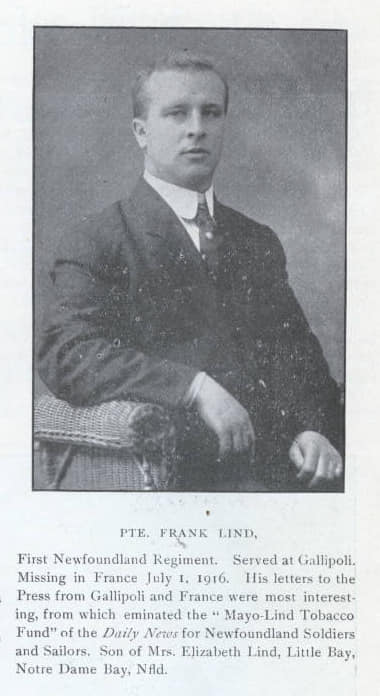
The family’s emphasis on education allowed Frank to become an unofficial war time correspondent. He wrote of the flying machines, the mustard gas, and how the men sang the songs of James Murphy. The Song of the Apples was a favourite and he sang it with the other Newfoundlanders found in those trenches. His letters and military files document the men suffering from frost bite, trench foot, influenza, gonorrhoea, bullet wounds, grief, and the endless threat of death. He wrote of German prisoners and Australian allies, and through it all his letters chronicle a cheerful nature and an accommodating demeanour. A friend, once suffering of fever, wrote that Lind had covered his shift back-to-back with his own under the risk of sniper fire.
Frank Lind departed from St. John’s Harbour on the SS Florizel in 1914 with the Newfoundland Regiment’s first troop, the Blue Puttees. He travelled the wartime European waters on the SS Megantic and the SS Lake Manitoba on route to his battle fields. His epithet was delivered back across the waters to Newfoundland on the final voyage of the SS Sachem.
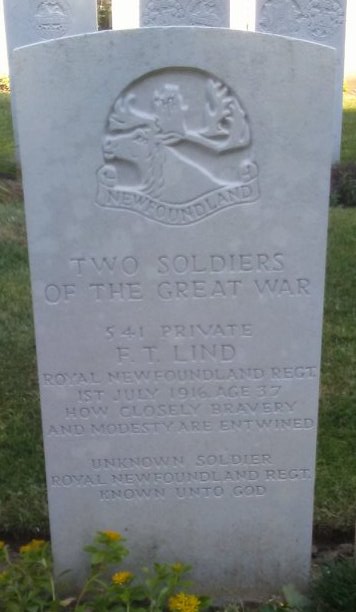
His letters home from France and Galipoli were published in The Daily News and covered the early days of the war. They were a window into the frontline for Newfoundlanders many of whom wrote letters back to the famed Mayo Lind. He earned that nickname after one letter detailed a shortage of “Mayo” brand tobacco among the troops. That letter ignited the “the Mayolind fund” across the island which saw much tobacco and other supplies paid for by Newfoundlanders and sent overseas.
Frank Lind died at Beaumont Hamel on July 1st 1916. It was a full year before his body was recovered. His family learned of his death with the rest of the population, seen reported in local Newfoundland newspapers. His military files contain a series of letters back and forth as his family first enquires as to the truth of those reports only to be told he was missing in action before finally confirming that he was not a POW but was deceased.
The site of his death near Danger Tree was visited by Sir John Crosbie in 1920 and Sir William Coaker in 1924. Coaker spoke of the Bronze Caribou monument which was still packaged there waiting to be raised. Frank Lind laid next to Sergt. Tom Carroll of Bell Island, who was said to have gotten further than anyone on that July day.
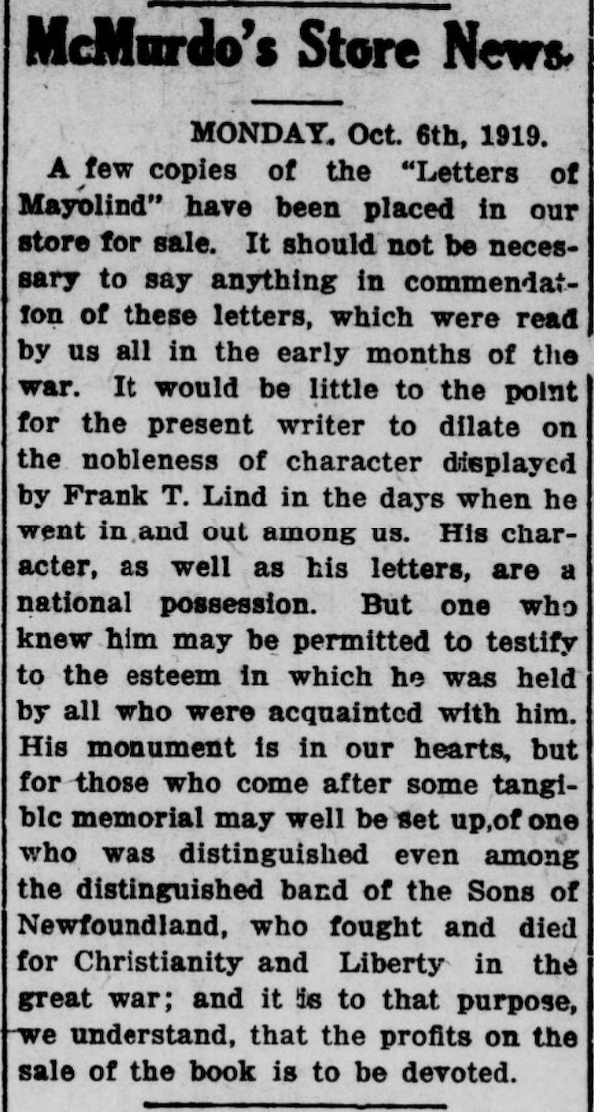
Frank Lind was a popular figure and his death was felt by all Newfoundlanders. Three years after he was killed by enemy fire his letters were published in a book by Dr. Robinson and sold in local shops. Proceeds from those sales were used for a memorial. Frank’s mother requested it take the form of a church lectern. Plans for the Mayo Lind memorial were covered in the Daily Star, Western Star, Evening Telegram, and the Evening Advocate. From those combine references I can tell you the following:
It was manufactured by the firm of J. Wippell and Co., Ltd., of London and Exeter. It was sent to Newfoundland by said company and held in display in St. John’s in the windows of Ayre & Sons, Ltd, dry goods department. There, at Frank’s previous employers store, it awaited the arrival of a brass tablet to be attached. After which it was repackaged and shipped to Little Bay and donated to the Church of England at St. Luke’s. The handsome lectern was said to be a credit to Exeter’s craftsmanship.
The tablet, which followed from England, was carried on the final voyage of the Sachem. Under the regimental badge, the inscription on the tablet reads “To the Glory of God and in memory of Private Francis T. Lind Born at Betts Cove. March 9th, 1879 who, with many of his gallant comrades, fell gloriously in action at Beaumont Hamel in France, on July 1st, 1916. Their name liveth forevermore.”
The church in Little Bay played the first hymn on a new organ for the memorial service which marked the unveiling on July 3rd 1921. The policeman’s diary describes a well attended service. The lectern was placed in the School Chapel with Rev. Bull officiating the Memorial Service. After the unveiling he “gave an interesting and impressive address on the valiant ones who fell for the cause of Right and Liberty.”
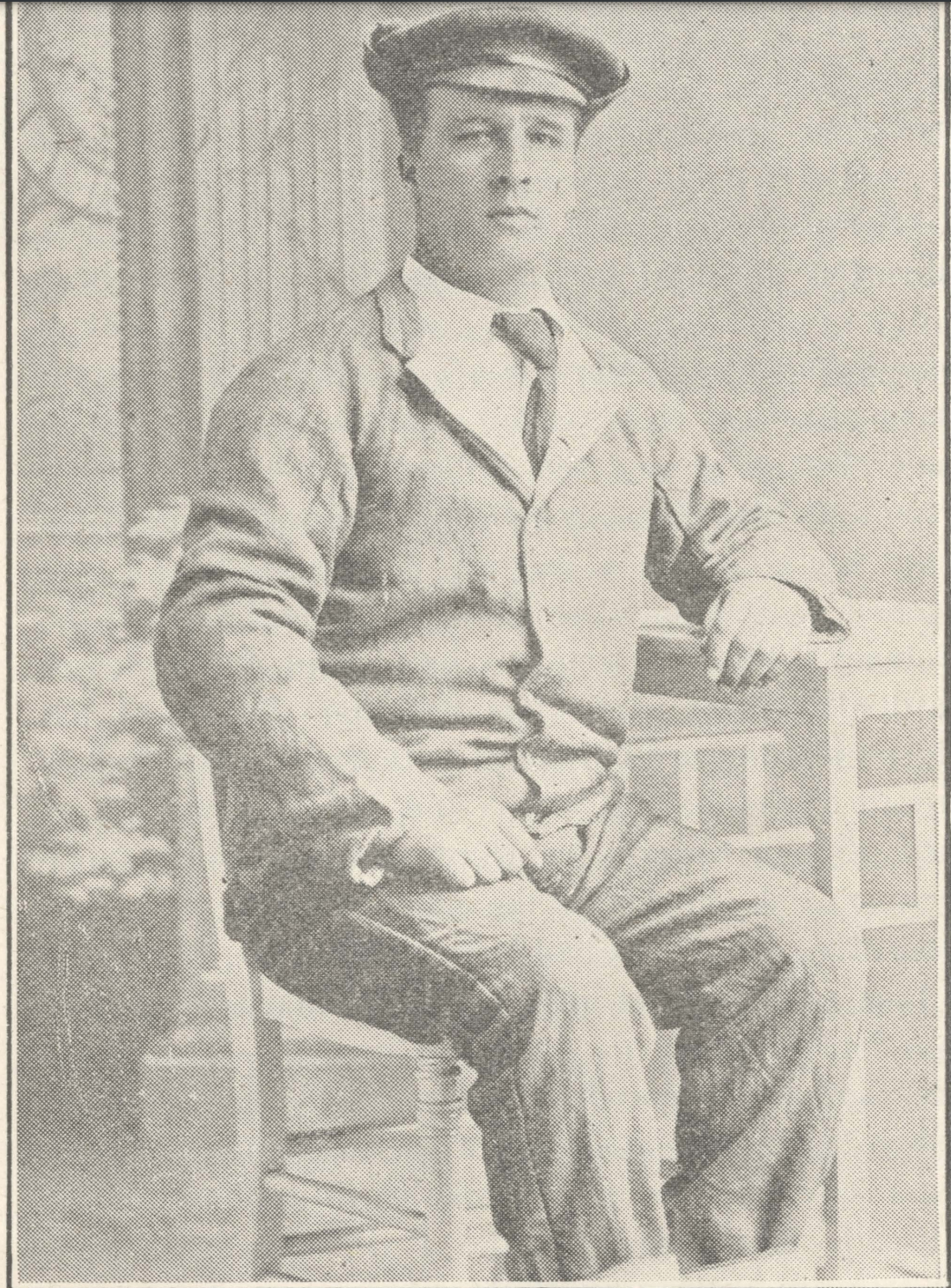
I had very much liked to find a picture of his memorial lectern for you but I’ve ran into some difficulties. I can tell you it was moved from Little Bay to Springdale and reportedly still resided in the Anglican Church there until its recent sale. If you have pictures of it or know of its current location please inform me. I’d appreciate it if you’d share this article to help with that effort. In the meantime I believe Lind’s Pond makes a fine site for remembering him. If you find yourself in Little Bay this Remembrance Day please take a moment to stop and remember a young boy who used to play there. Remember Frank “Mayo” Lind and his ultimate sacrifice.
I spent my summers where Frank spent his – fishing at Lind’s Pond in Little Bay. Otherwise, I grew up on Mayo Street in Grand Falls. I wonder now if it was named for him too. The past intersects us.
I’d like to thank our Veterans for their service.
And thank you for reading.
Sources:
Below are some of my sources on this family. I’ve excluded the newspapers referencing Frank Lind as they are just too extensive but if you’re looking for one feel free to ask. If you’re doing work on the Lind family you’ll want to check out the Letters of Mayo Lind (1919) and Westward with Henry and Caroline (1989). I’d also advice you that Henry Lind’s 1888 diary from Little Bay is at The Rooms but miscategorized as Bett’s Cove. Also the 1921 census mistakenly lists Lind as Lynn.
- 1867 – Henry Lind teaching in Harbour Grace (Taylor)
- 1868 – Birth of William Haims Lind at Greenspond (Vit stats)
- 1870 – Birth of Robert George Lind at Greenspond (Vit stats)
- 1873 – Birth of Caroline Lucretia Lind at Greenspond (Vit stats)
- 1875 – Birth of James Marshall Lind at Greenspond (Vit stats)
- 1877 – Family moves to Bett’s Cove
- 1881 – Catherine Eleanor Mabel Lind born at Betts Cove (Vit stats)
- 1882 – Henry Lind in Bett’s Cove (Voter’s List)
- 1884/1885 – Arrival of Paymaster Lind and family (Taylor)
- 1885 – Mrs. Lind participated in the Fancy Fair (TS, June 13)
- 1885 – Address to Wallace (ET, Oct 15)
- 1886 – Lay reader for Goudie in absence of Clift (Wells)
- 1886 – Willy working at the store (Taylor)
- 1886 – Mr. Burteau worked as clerk under Lind (DC, Sept 7)
- 1888 – Henry Lind’s journal (The Rooms)
- 1888 – Birth of daughter Feb 28 (TS, March 17)
- 1888 – Mr. Lind addressed the Temperance meeting (TS, March 3)
- 1888 – William Lind plays cricket with the Pioneers (TS, Sept 15)
- 1889 – Henry Lind in Little Bay Bight
- 1889 – Marriage of Dr. Jospeh. Mr. Lind invited to Doctor’s new house for supper (ET, Aug 26)
- 1889 – Death of Jane age 13 months (Headstone)
- 1889 – March concert – Frank and James (TS, March 23)
- 1889 – Declined to act in protest against granting (SJC, Oct 12)
- 1889 – W. Lind masonic meeting
- 1889 – Christmas concert – Mabel, James, and Frank (TS, Dec 21)
- 1890 – William Lind member of the Billiard and Reading Club (ET, Jan 7)
- 1890 – H. Lind was a church warden during Bishop Jones visit (TS, Oct 25)
- 1890 – William H. Lind Tyler at Masonic meeting (TS, Sept 28)
- 1890 – William H. Lind Secretary at Masonic meeting (TS, Sept 27)
- 1891 – F. Lind involved in Concert (TS, May 16)
- 1892 – Henry’s job loss due to deafness (Taylor)
- 1892 – Death of Caroline Lind in Boston (Taylor)
- 1893 – Henry working as teacher (C of E reports)
- 1893 – Frank leaves after schooling at age 14 (Robinson)
- 1894 – Henry listed as fisherman (McAlpine)
- 1898 – Henry working as teacher (C of E reports)
- 1898 – Wiliam photographer (McAlpine)
- 1908 – Death of Henry (Headstone)
- 1909 – Sarah Walker living with sister Elizabeth Lind (Will of Ernest Lind)
- 1910 – Death of Ernest Lind (Will)
- 1914 – Frank Lind enlists for WW1 (Robinson)
- 1914-1916 – Letters of Mayo Lind
- 1916 – Mayo Lind military files
- 1919 – Letters of Mayo Lind published (Robinson)
- 1935 – Death of Elizabeth Lind
